Very Colorful Clouds Of Rho Ophiuchi.

Very colorful clouds of Rho Ophiuchi.
Image Credit & Copyright: Tom Masterson, ESO’s DSS
More Posts from Littlecadet-biguniverse and Others
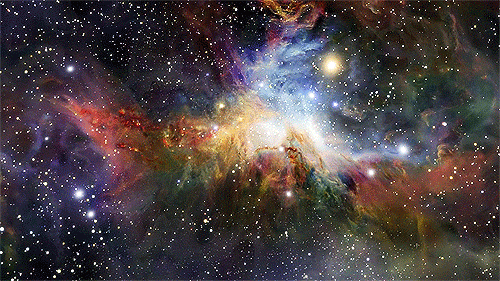
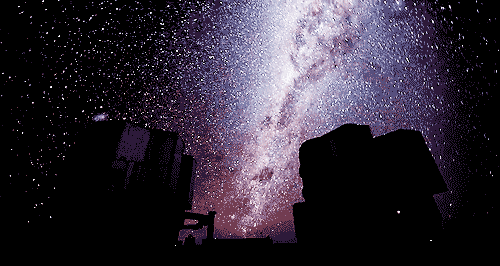
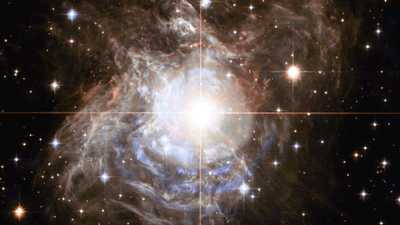
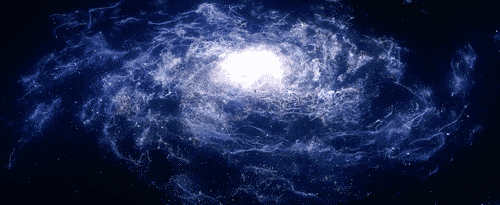
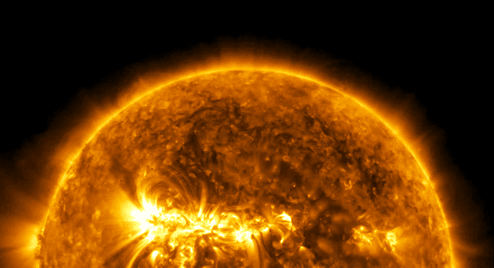
“Every one of us is, in the cosmic perspective, precious. If a human disagrees with you, let them live. In a hundred billion galaxies, you will not find another.” ~ Carl Sagan, Cosmos

This beautiful supernova remnant is the product of a huge stellar explosion in our neighboring galaxy — the Small Magellanic Cloud (📷 : NASA)

NGC 1275 Multi-Wavelength

What forms lurk in the mists of the Carina Nebula? The dark ominous figures are actually molecular clouds, knots of molecular gas and dust so thick they have become opaque. In comparison, however, these clouds are typically much less dense than Earth’s atmosphere. Featured here is a detailed image of the core of the Carina Nebula, a part where both dark and colorful clouds of gas and dust are particularly prominent. The image was captured last month from Siding Spring Observatory in Australia. Although the nebula is predominantly composed of hydrogen gas – here colored green, the image was assigned colors so that light emitted by trace amounts of sulfur and oxygen appear red and blue, respectively. The entire Carina Nebula, cataloged as NGC 3372, spans over 300 light years and lies about 7,500 light-years away in the constellation of Carina. Eta Carinae, the most energetic star in the nebula, was one of the brightest stars in the sky in the 1830s, but then faded dramatically.
Object Names: Carina Nebula
Image Type: Astronomical
Credit: John Ebersole
Time And Space

NGC 3576, an emission nebula in the constellation of Carina 6,000 light years away. -image via paulhaese.net

“Rho Ophiuchi Cloud Complex Area Of The Milky Way” by Martin Campbell on Flickr.
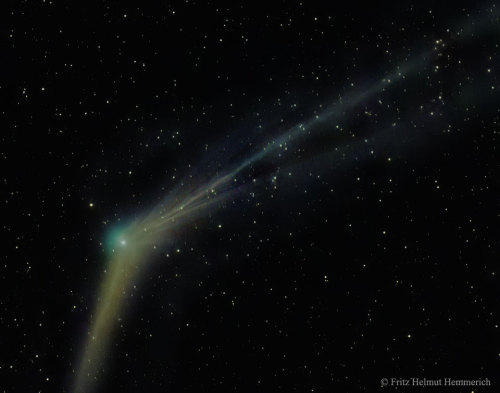
Comet Catalina Emerges : Comet Catalina is ready for its close-up. The giant snowball from the outer Solar System, known formally as C/2013 US10 tails, making it an impressive object for binoculars and long-exposure cameras. The featured image was taken last week from the Canary Islands, off the northwest coast of Africa. Sky enthusiasts around the world will surely be tracking the comet over the next few months to see how it evolves. via NASA
js

Expedition 48 Crew Preparing to Return Home via NASA http://ift.tt/2bV7T75


Infrared Saturn Clouds via NASA http://ift.tt/2b5OdPE
-
 nlockett reblogged this · 7 years ago
nlockett reblogged this · 7 years ago -
 nlockett liked this · 7 years ago
nlockett liked this · 7 years ago -
 nycewell liked this · 7 years ago
nycewell liked this · 7 years ago -
 becxwilliams reblogged this · 8 years ago
becxwilliams reblogged this · 8 years ago -
 becxwilliams liked this · 8 years ago
becxwilliams liked this · 8 years ago -
 bayonet75 liked this · 8 years ago
bayonet75 liked this · 8 years ago -
 jaimeroman liked this · 8 years ago
jaimeroman liked this · 8 years ago -
 distinguishedrunawaymoon-blog reblogged this · 8 years ago
distinguishedrunawaymoon-blog reblogged this · 8 years ago -
 itsalexr reblogged this · 8 years ago
itsalexr reblogged this · 8 years ago -
 designated-dumpster reblogged this · 8 years ago
designated-dumpster reblogged this · 8 years ago -
 cukierbender-blog liked this · 8 years ago
cukierbender-blog liked this · 8 years ago -
 anbutaiso reblogged this · 8 years ago
anbutaiso reblogged this · 8 years ago -
 palkias-space reblogged this · 8 years ago
palkias-space reblogged this · 8 years ago -
 brettejensen45 liked this · 8 years ago
brettejensen45 liked this · 8 years ago -
 estefanotorrente-blog liked this · 8 years ago
estefanotorrente-blog liked this · 8 years ago -
 importantkryptonitemagazine liked this · 8 years ago
importantkryptonitemagazine liked this · 8 years ago -
 nithing-queen-blog liked this · 8 years ago
nithing-queen-blog liked this · 8 years ago -
 tiranosauriosrex liked this · 8 years ago
tiranosauriosrex liked this · 8 years ago -
 littlecadet-biguniverse reblogged this · 8 years ago
littlecadet-biguniverse reblogged this · 8 years ago -
 ostentatiousrrex liked this · 8 years ago
ostentatiousrrex liked this · 8 years ago -
 artslip liked this · 8 years ago
artslip liked this · 8 years ago -
 maskedmonogamy-blog liked this · 8 years ago
maskedmonogamy-blog liked this · 8 years ago -
 jarjarbeans12 liked this · 8 years ago
jarjarbeans12 liked this · 8 years ago -
 bogglefuck liked this · 8 years ago
bogglefuck liked this · 8 years ago -
 mason0404-blog liked this · 8 years ago
mason0404-blog liked this · 8 years ago -
 yanderemika liked this · 8 years ago
yanderemika liked this · 8 years ago -
 xdragonshy-blog liked this · 8 years ago
xdragonshy-blog liked this · 8 years ago -
 grace-of-god reblogged this · 8 years ago
grace-of-god reblogged this · 8 years ago -
 thatlady101 reblogged this · 8 years ago
thatlady101 reblogged this · 8 years ago -
 thatlady101 liked this · 8 years ago
thatlady101 liked this · 8 years ago -
 kaieraai reblogged this · 8 years ago
kaieraai reblogged this · 8 years ago -
 kaieraai liked this · 8 years ago
kaieraai liked this · 8 years ago -
 lakystryke-blog liked this · 8 years ago
lakystryke-blog liked this · 8 years ago -
 lawmluna liked this · 8 years ago
lawmluna liked this · 8 years ago -
 viaje-la-luz-fantastica-blog reblogged this · 8 years ago
viaje-la-luz-fantastica-blog reblogged this · 8 years ago -
 subhasbarma-blog liked this · 8 years ago
subhasbarma-blog liked this · 8 years ago -
 tojust-be liked this · 8 years ago
tojust-be liked this · 8 years ago -
 xalabaar liked this · 8 years ago
xalabaar liked this · 8 years ago
GREETINGS FROM EARTH! Welcome to my space blog! Let's explore the stars together!!!
144 posts